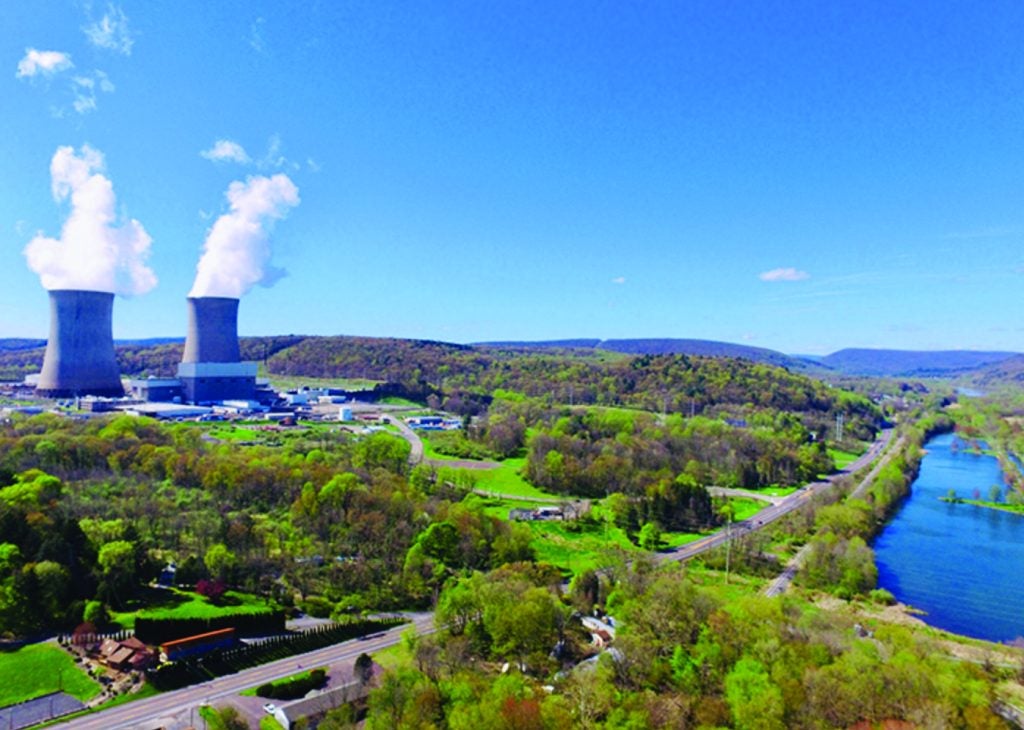
There’s no doubt that data centres represent a source of surging energy demand. A new report argues that matching them with SMRs offers significant advantages to both sectors that could usher in a new industrial age.
Growth in data centres represents a huge opportunity for Small Modular Reactors (SMRs), offering a transformative new approach that would plan data centre construction and growth together with this emergent nuclear technology.
This is the conclusion of a new report from RED Engineering Design, a subsidiary of Tractebel. Their analysis, ‘Powering data centres with advanced nuclear technologies’ notes that data usage and processing are poised to undergo a radical expansion associated with the growing need for digital connectivity and emerging functions such as Artificial Intelligence. As a result, the report says, the combined electricity consumption of Big Tech firms is projected to exceed that of some developed countries largely because of the hyper-exponential data centre growth, the prime machinery of the digital age.
RED considers that the scale of energy demand for data centres is such that it represents a potential to catalyse a new generation of energy systems and industrial clusters that can be formed around data centres. With complementary applications exploiting the synergy between power, heat and water intensive industries creating a highly integrated energy system.

However, the authors argue to achieve this change needs a paradigm shift in the way energy systems are planned and to embrace integrated master-planning of new industrial clusters to put them on a sustainable growth footing.
Putting SMRs and advanced nuclear at the heart of these data centre-led industrial clusters could address the energy quadrilemma by delivering affordable, sustainable, secure energy while maximising the positive social impact. The authors note that SMRs are designed to last over four decades, require long-term highly skilled local employment and offer a perfect platform for green growth. However, they also point out that SMRs have thus far been overlooked. If their mass production is to succeed in offering economies of scale, both a secure supply chain and end-user agreements by energy intensive users are needed. Data centres and SMRs thus present a unique partnership opportunity.
SMR benefits in the data centre role
Using nuclear as an option to decarbonise a data centre makes sense beyond the SMRs under consideration. In January 2023 a 48 MW Data Centre began operating as a unit directly connected to the 2,475 MW Susquehanna nuclear power station in Pennsylvania. Although this is an interesting first, the authors point out that large power plants can only be found on a relatively small number of sites, which limits the possibilities for joint deployment. The reduced footprint and enhanced safety features SMRs will thus multiply the choice of sites where co-location with data centres can become the norm.

The report identifies a number of additional advantages that SMRs have over their larger cousins. One of these advantages is power matching between a data centre and SMRs. It identifies two options for power matching when planning SMR-powered new data centres. One is the energy hub which integrates a data centre within a low-carbon energy hub and where the installed capacity is comfortably above the data centre demand. In this case the SMR would provide the energy supply backbone while storage systems and UPS can be integrated if necessary. A second option is the use of a dedicated Micro Modular Reactor (MMR) with power output of below 10 MWe and which exactly matches data centre power demand and enables virtually parallel deployment of both data centre and reactor modules. Advantages of MMRs noted in the report are quick construction, high multi-modularity, and versatility. The authors point out that MMRs are likely to see quicker permitting times than SMRs, and may even be shorter than that for data centres in a country where the first-of-a-kind reactor has already been deployed. Moreover, given MMRs usually have a design lifetime that depends on the power demand, the projected end-of-life of the plant and a data centre can be matched beforehand making the lifetime of the installations compatible. However, the authors also sound a note of caution regarding the cost competitiveness of the MMR option.
Another benefit is the security of energy supply and reliability that an SMR offers. High availability is a key requirement for data centres, where the service continuity is very close to 100%, typically 5-nines or 99.999% of the time. This corresponds to a downtime of slightly above 5 minutes per year. Single source electricity supply systems cannot deliver this level of service with the authors noting that even the best performing nuclear plants have an uptime of around 95% while intermittent renewable energy sources such as solar panels have capacity factors as low as 25%. To achieve the desired availability data centres rely on the transmission and distribution system. SMR powered microgrids can eliminate network distribution losses that are typically of the order of 5-10% in western Europe. Such microgrids can facilitate the clustering of complementary industries with power and heat demand and thus fuel utilisation is optimised. Where the SMR and the data centre cannot be physically located close to each other, ‘virtual coupling’ is possible in which the SMR is connected to the downstream energy system that provides emission-free power to the data centre. A dedicated microgrid that can operate in island mode is an option in which different energy sources complement each other in all situations. Nonetheless, the report states that higher availability for single sources like SMRs means that the least CAPEX is required on installing back-up resources or assets that are mostly idle. Furthermore, SMRs can provide primary energy, and generate additional hydrogen that can be used in fuel cells that can act as a secondary power supply to achieve resilience and diversity of energy sources. Both SMRs and fuel cell technologies have exceptionally high reliability attributes (respectively able to achieve 90%-95% and 95%-99% in configurations incorporating redundant components) which can meet the data centre uptime requirements.
The onsite hydrogen production can thus replace back- up engines and battery storage. Sufficient hydrogen can be stored to power the fuel cells when back-up energy is required while any surplus hydrogen could be used to enable a secure emission-free local supply. Given that nuclear power is a capital-intensive commitment, albeit with the benefit of guaranteeing long-term stability of the energy price, the provision of additional energy products can expand the offering and enhance economic returns. For example, alongside hydrogen, the combination of SMRs and data centres yields significant heat outputs which can be utilised in other applications without distribution losses or discharge to the atmosphere. These may include low grade heat for local residential/commercial developments or district energy networks within a radius of up to around 20 km and agricultural use in green houses as well as higher grade heat for various process and manufacturing industries.
Mutual growth prospects
When brought together to support the growth of a data centre provider, smaller modules such as an MMR have the benefit of closely and economically matching lower data centre loads at the initiation of the microgrid. But as the microgrid and data centre growth evolves, multiples of larger SMRs that can be deployed together with initial units would offer resilience, diversity and load following capabilities.

Concluding, the report says that establishing a SMR-based scheme requires multiple stakeholders, local communities and regulatory bodies to collaborate closely. However, the authors argue that with timely formation of energy partnerships and stakeholder engagement, it will be possible for SMR powered data centres to initiate a long-term programme of infrastructure building that offers the host community meaningful employment not only during construction and refurbishment phase, but consistently throughout the lifecycle of the industrial cluster. Notably, SMRs can provide zero-emission, reliable, and sustainable energy to data centre communities to support their long-term growth. As a result, SMRs can enable the data centre sector to become the foundation of a new industrial revolution and a driving force behind new energy and infrastructure building partnerships. This collaboration will lead to significant investments in regional infrastructure, the creation of meaningful and lasting employment and the consolidation of international fuel and resource supply chains. At the same time, the authors say, data centre planners expressing interest in SMR technology wield considerable influence. That is significant and dearly needed by SMR vendors that could use this opportunity to accelerate deployment and bolster the business case.



